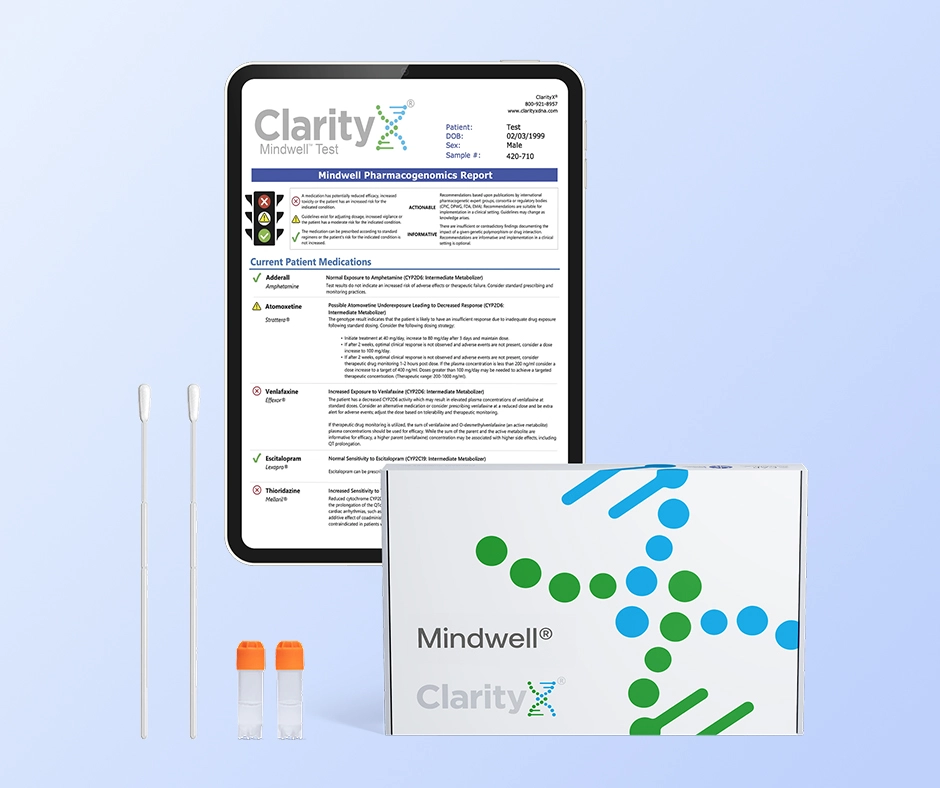Key Highlights
- Sertraline, also known as Zoloft®, is a selective serotonin reuptake inhibitor (SSRI) used to treat various mental health conditions.
- It works by increasing the levels of serotonin in the brain. This can help improve symptoms of depression, anxiety disorders, and other psychiatric conditions.
- The timeline for sertraline to take effect varies, but some people start to notice improvements within the first 1-2 weeks of starting the medication.
- For many, it may take 4-6 weeks to experience the full effects of sertraline. Some symptoms, such as depressed mood, may take longer to improve (up to eight weeks).
- Common side effects of sertraline include nausea, diarrhea, dry mouth, trouble sleeping, tiredness, and sexual side effects.
- It's important to work closely with your healthcare provider to monitor your progress and discuss any adjustments or concerns during treatment with sertraline.
Introduction
Sertraline, commonly known by its brand name Zoloft®, is a medication that belongs to a class of drugs called selective serotonin reuptake inhibitors (SSRIs). It is primarily prescribed for the treatment of various mental health disorders, including depression, anxiety disorders, panic disorder, obsessive-compulsive disorder (OCD), and post-traumatic stress disorder (PTSD). The effectiveness of sertraline in alleviating the symptoms of these disorders has made it a popular choice among healthcare providers.
When starting a new medication, it's natural to wonder how long it will take to start working and when you can expect to see improvements. The timeline to effectiveness can vary from person to person, but understanding the general timeline can provide some guidance and help manage expectations.
In this blog, we will explore the timeline for the effectiveness of sertraline, including how it works, the main uses of the medication, and what to expect during the first few weeks of treatment. We will also discuss the short-term, mid-term, and long-term effects of sertraline and how to monitor your progress and manage any side effects that may arise. Finally, we will address some frequently asked questions about sertraline to provide a comprehensive understanding of this medication and its effectiveness.
Understanding Sertraline
Before discussing the timeline for sertraline's effectiveness, it's important to understand the medication itself.
What Is Sertraline and How Does It Work?
Sertraline, also known by its brand name Zoloft, is a medication that belongs to a class of drugs called selective serotonin reuptake inhibitors (SSRIs). These medications increase serotonin levels, a neurotransmitter, in the brain. Serotonin plays a key role in regulating mood, emotions, and sleep.
In individuals with mental health conditions such as depression and anxiety disorders, there may be an imbalance of serotonin in the brain. Sertraline helps to correct this imbalance by blocking the reuptake of serotonin, which increases the amount of serotonin available in the brain. This, in turn, can help improve mood and reduce symptoms of depression and anxiety.
By targeting serotonin reuptake, sertraline helps restore normal levels of serotonin and improve the communication between nerve cells in the brain. This can reduce symptoms and improve overall mental well-being.
The Main Uses of Sertraline
Sertraline is prescribed for several mental health conditions due to its effectiveness in managing symptoms. Some of the main uses of sertraline include:
- Panic Disorder: Sertraline can help reduce the frequency and severity of panic attacks in individuals with panic disorder.
- Obsessive-Compulsive Disorder (OCD): Sertraline is commonly used as a first-line treatment for OCD, helping to alleviate obsessions and compulsions.
- Major Depressive Disorder: Sertraline is effective in treating major depressive disorder by improving mood, energy levels, and overall well-being.
- Social Anxiety Disorder (SAD): Sertraline can help reduce social anxiety symptoms, such as fear of social situations and excessive self-consciousness.
- Premenstrual Dysphoric Disorder (PMDD): Sertraline is approved by the FDA to treat PMDD, a severe form of premenstrual syndrome characterized by mood swings, irritability, and depression.
It's important to consult with a healthcare provider to determine the appropriate use of sertraline for individual needs and to discuss potential risks and benefits.
Starting Sertraline
Starting sertraline involves finding the right initial dosage based on individual needs and mental health conditions. The initial dosage can vary depending on the severity of symptoms and the specific condition being treated.
It is recommended to start with a low dosage and gradually increase it over time to minimize the risk of side effects. This allows the body to adjust to the medication and ensures an appropriate therapeutic level is reached.
It's important to note that sertraline is an antidepressant medication that requires regular use for it to be effective. It is not intended for immediate relief of symptoms and may take several weeks to reach its full effectiveness.
Initial Dosage and How to Take It
The initial sertraline dosage can vary depending on the specific condition being treated. For most adults, the usual starting dose is 50 mg per day. However, the dosage may be lower for individuals with certain medical conditions or higher for those with severe symptoms.
Sertraline is available as an oral tablet or solution. The most common version of the medication, the tablets, should be taken with water and can be taken with or without food. The dosage range is usually 25 mg, 50 mg, and 100 mg, although some individuals may be prescribed up to 200 mg daily.
The typical starting dose for most conditions is 50 mg per day, although a dose of 25mg per day may be used for children and people with certain anxiety disorders. The oral solution should be measured using the provided dropper and can be mixed with water, ginger ale, lemonade, or orange juice before consumption.
It's important to take sertraline at the same time each day to maintain a consistent level of the medication in the body. It's also advisable to follow the healthcare provider's instructions regarding dosage adjustments and any specific instructions for your individual case.
What to Expect in the First Few Weeks
During the first few weeks of starting sertraline, individuals may experience a range of changes in their symptoms and energy levels. It's important to note that everyone's response to the medication can vary.
Some individuals may start noticing improvements in their symptoms, such as a decrease in sadness or anxiety, within the first few weeks. However, it's common for the full therapeutic effects of sertraline to take several weeks or more to become fully noticeable.
It's also important to be aware of potential side effects that may occur during the initial weeks of treatment. Common side effects may include nausea, diarrhea, dry mouth, difficulty sleeping, and changes in appetite. These side effects are usually temporary and tend to improve as the body adjusts to the medication. However, if you experience any severe or persistent side effects, it is important to seek medical advice from your doctor. They can provide guidance and potentially adjust your dosage or prescribe additional medications to help manage any side effects.
Timeline to Effectiveness
The timeline to experience the full effectiveness of sertraline can vary from individual to individual. While some individuals may start to notice improvements in their symptoms within the first few weeks, it may take four to six weeks or, in some cases, eight weeks to experience the full effects of Zoloft. If you have waited the expected time frame and do not believe that Zoloft is the best medication for your condition, please talk to your healthcare provider before stopping the medication. Understanding the timeline to effectiveness is crucial for managing and monitoring the use of Zoloft.
It's important to continue taking sertraline as prescribed by the healthcare provider, even if immediate relief is not experienced. Abruptly stopping the medication or adjusting the dosage without medical guidance can potentially lead to withdrawal symptoms or a recurrence of symptoms.
If no improvements are observed after a significant treatment period, it's important to consult the healthcare provider to explore alternative treatment options or adjust the current treatment plan.
Short-term Effects: The First 1-2 Weeks
During the first 1-2 weeks of starting sertraline, individuals may experience some short-term effects as the body adjusts to the medication. It's important to understand that these effects are usually temporary and tend to diminish as treatment continues.
Common short-term side effects of sertraline may include nausea, diarrhea, dry mouth, changes in appetite, and difficulty sleeping. These side effects are generally mild and may subside over time.
In terms of mental health, it is common for individuals to experience some fluctuations in their mood or anxiety levels during the initial weeks of treatment. This can be attributed to changes in serotonin levels in the brain as the medication takes effect. It's important to discuss any concerns or unusual symptoms with the healthcare provider. It’s important to watch for and openly discuss any new or worsening thoughts of self-harm or suicide, particularly in adolescents and young adults adjusting to antidepressant medication.
Mid-term Effects: Weeks 3-6
In the mid-term, which is around weeks 3-6 of sertraline treatment, individuals may notice further improvements in their symptoms of anxiety and depression. Sertraline modulates serotonin levels in the brain, which may help improve mood and emotional stability.
As treatment progresses, common side effects such as nausea, diarrhea, and dry mouth may start to subside or become less noticeable. However, reporting any persistent or worsening side effects to the healthcare provider is important.
During this phase, individuals may also experience changes in energy levels and an overall improvement in their mental health. It's important to regularly communicate with the healthcare provider to monitor progress and make any necessary adjustments to the treatment plan.
Long-term Effects: Beyond 6 Weeks
Beyond 6 weeks, continued use of sertraline may help contribute to stability in mental health conditions such as depression, anxiety, and other related disorders.
The effectiveness of sertraline may vary from person to person, and some individuals may require adjustments to their dosage or additional treatment options to achieve optimal results. It's important to stay in regular contact with the healthcare provider to discuss any changes in symptoms or concerns.
In some cases, the healthcare provider may recommend a combination of medication and therapy to address the individual's unique needs. This can help identify stressors and develop long-term skills for managing mental health concerns. To ensure the best possible outcomes, it's essential to follow the prescribed treatment plan and communicate openly with the healthcare provider.
Monitoring Your Progress
Monitoring your progress while taking sertraline is an important part of the treatment process. Regular communication with your healthcare provider, whether a psychiatrist or primary care provider, can help ensure that the medication works effectively and that any necessary adjustments are made.
Your healthcare provider will assess your progress by monitoring your symptoms, discussing any side effects or concerns, and evaluating the overall impact of sertraline on your mental health and well-being. This ongoing monitoring allows for personalized care and the opportunity to optimize your treatment plan.
Signs That Sertraline Is Working
As you continue to take sertraline, there are several signs that can indicate that the medication is working effectively. These signs may include:
- Reduction in symptoms of depression: You may notice an improvement in your mood, feelings of sadness, and overall outlook on life.
- Decreased anxiety: Symptoms of anxiety, such as racing thoughts, excessive worry, and restlessness, may decrease or become more manageable.
- Improved quality of life: Sertraline can help enhance your overall well-being by improving your ability to engage in daily activities, maintain relationships, and enjoy hobbies or interests.
- Better sleep patterns: Sertraline can help regulate sleep patterns, improving sleep quality and increasing energy levels during the day.
It's important to remember that sertraline's effectiveness can vary from person to person. Finding the right dosage and treatment plan may take time. Sertraline is also most effective when approached as a source of support rather than a solution in and of itself. Actively developing personalized strategies for managing stressors is still of paramount importance.
When to Consult Your Doctor about Adjustments
Consulting your healthcare provider is crucial if you have concerns or notice any changes in your symptoms or side effects while taking sertraline. Here are some situations where you should reach out to your doctor:
- Lack of improvement: If you have been taking sertraline for a significant amount of time (i.e., a month or longer) and have not noticed any improvement in your symptoms, it's important to discuss this with your healthcare provider. They may recommend adjusting the dosage or trying a different treatment approach.
- Worsening symptoms: If your symptoms worsen or you experience new or severe side effects, it's important to seek medical attention. Your healthcare provider can assess the situation and determine the best course of action.
- Side effects: If you experience persistent or bothersome side effects, such as sexual dysfunction or weight changes, it's important to discuss these concerns with your healthcare provider. They may recommend adjusting the dosage or exploring alternative treatment options.
Remember, open communication with your healthcare provider is key to ensuring the best possible outcomes and a personalized treatment plan.
Side Effects and Management
Sertraline, like any medication, can have side effects. While most are mild and temporary, it's important to be aware of them and know how to manage them. Common side effects of sertraline may include nausea, diarrhea, dry mouth, changes in appetite, and difficulty sleeping.
If you experience mild side effects, they may subside as your body adjusts to the medication. It is important to communicate any concerns with your healthcare provider, who can provide guidance and reassurance.
In rare cases, serious side effects may occur. These can include suicidal thoughts, serotonin syndrome (more likely when combined with other medications that also affect serotonin levels), or severe allergic reactions. If you experience any of these serious side effects, seek immediate medical attention.
Common Side Effects and How to Manage Them
Common side effects of sertraline can include:
- Nausea: Taking sertraline with food or dividing the dose throughout the day can help alleviate nausea. If it persists, consult your healthcare provider.
- Diarrhea: Staying hydrated and consuming a balanced diet can help manage diarrhea while taking sertraline. Consult your healthcare provider if it becomes severe or persistent.
- Dry mouth: Staying hydrated and practicing good oral hygiene, such as regular teeth brushing, can help alleviate dry mouth. Chewing sugar-free gum or using saliva substitutes may also provide relief.
- Difficulty sleeping: Taking sertraline in the morning or adjusting the dosage timing can help minimize difficulty sleeping. It's important to avoid caffeine or stimulating activities close to bedtime.
If any side effects persist or become bothersome, it's important to communicate with your healthcare provider. They can provide guidance on managing side effects or recommend alternative treatment options.
Dealing with Serious Side Effects
While rare, serious side effects may occur while taking sertraline. It's important to be aware of these potential risks and seek medical attention if they occur.
Serotonin syndrome is a potentially life-threatening condition that can occur when there is an excessive accumulation of serotonin in the body. Symptoms may include agitation, confusion, increased heart rate, and rigid muscles. If you experience these symptoms, seek immediate medical attention. This is more likely to occur if you take multiple substances that influence serotonin levels, including over-the-counter supplements and prescription medications. It’s important to inform each of your healthcare providers of all the medications and supplements you use.
Another concern when discontinuing sertraline is the possibility of withdrawal symptoms, also known as discontinuation syndrome. While not habit-forming, stopping sertraline suddenly can lead to serotonin imbalances that cause symptoms. These symptoms can include flu-like symptoms, dizziness, and mood changes. It's important to work with your healthcare provider to safely taper off the medication if needed.
If you experience any serious side effects, seeking immediate medical attention is crucial. The table below summarizes the possible serious side effects of sertraline and when to seek medical help:
Conclusion
In conclusion, understanding the timeline for sertraline's effectiveness is crucial for managing expectations and monitoring progress. From short-term to long-term effects, each phase plays a vital role in your mental health treatment journey. It's essential to recognize signs of improvement, address side effects appropriately, and consult your healthcare provider for any adjustments. Remember, patience is key as sertraline gradually takes effect, offering relief and enhancing your well-being. Stay informed, stay observant, and prioritize your mental health throughout this process.
When considering treatment options your genetics can also play a vital role in determining which medications will be best suited for you. A simple test can help reduce the trial and error process associated with finding the right medication. Find out more by visiting www.clarityxdna.com
Frequently Asked Questions
How Long Should I Wait to Feel the Full Effects?
The full effects of sertraline may take several weeks to be noticeable. It's common for improvements to be seen within the first few weeks, but it may take up to 6-8 weeks to experience the full therapeutic benefits. It's important to continue taking the medication as prescribed and consult your healthcare provider if you have any concerns.
Can I Increase the Dosage If I Don’t See Results?
Increasing the dosage of sertraline should only be done under the guidance of your healthcare provider. If you don't see results within the expected timeframe, discussing this with your healthcare provider is important. They will evaluate your individual case and may recommend adjusting the dosage or exploring alternative treatment options based on your specific needs and any side effects experienced.
What Happens If I Miss a Dose?
If you accidentally miss a dose of sertraline, take it as soon as you remember unless it is close to the time for your next dose. In that case, skip the missed dose and resume your regular dosing schedule. It's important not to double up on doses to make up for a missed one. Consult your healthcare provider if you have any concerns or questions about missed doses.
Can Sertraline Be Used for Anxiety?
Yes, sertraline can be used to treat anxiety disorders, including generalized anxiety disorder, social anxiety disorder, and panic disorder. It is a commonly prescribed medication for anxiety due to its effectiveness in regulating serotonin levels in the brain. Your healthcare provider can help determine if sertraline is an appropriate treatment option for your specific anxiety symptoms.
Is It Safe to Drink Alcohol While Taking Sertraline?
It is generally recommended to avoid or limit alcohol consumption while taking sertraline. Alcohol can intensify the side effects of the medication, such as drowsiness and dizziness. Additionally, alcohol can interfere with the effectiveness of the medication in treating mental health conditions. It's important to discuss alcohol consumption with your healthcare provider to ensure the safe and effective use of sertraline.
How Do I Know If Sertraline Isn’t Right for Me?
If you are experiencing severe or persistent side effects or if feel that sertraline is not effectively managing your symptoms, it's important to consult with your healthcare provider. They can evaluate your individual case, consider alternative treatment options, or adjust the dosage or medication regimen to better suit your needs.
How to Safely Discontinue Sertraline?
Discontinuing sertraline should always be done under the guidance of your healthcare provider. A gradual tapering-off process is generally recommended to minimize the risk of withdrawal symptoms, also known as discontinuation syndrome. Your healthcare provider will provide specific instructions and monitor your progress during discontinuation to ensure a safe and smooth transition.
Can I Take Sertraline with Other Medications?
Sertraline can interact with certain medications, including other antidepressants, antipsychotics, and medications that affect serotonin levels. It's important to inform your healthcare provider about all your medications, including over-the-counter drugs and supplements. Your healthcare provider can provide guidance on potential drug interactions and adjust your treatment plan accordingly to ensure the safe and effective use of sertraline.
Resources :
https://www.ncbi.nlm.nih.gov/books/NBK554406/
https://www.aafp.org/pubs/afp/issues/2006/0801/p449.html
https://dailymed.nlm.nih.gov/dailymed/drugInfo.cfm?setid=983f8b2c-89ff-4519-b0f6-db3d17b3a3e7





